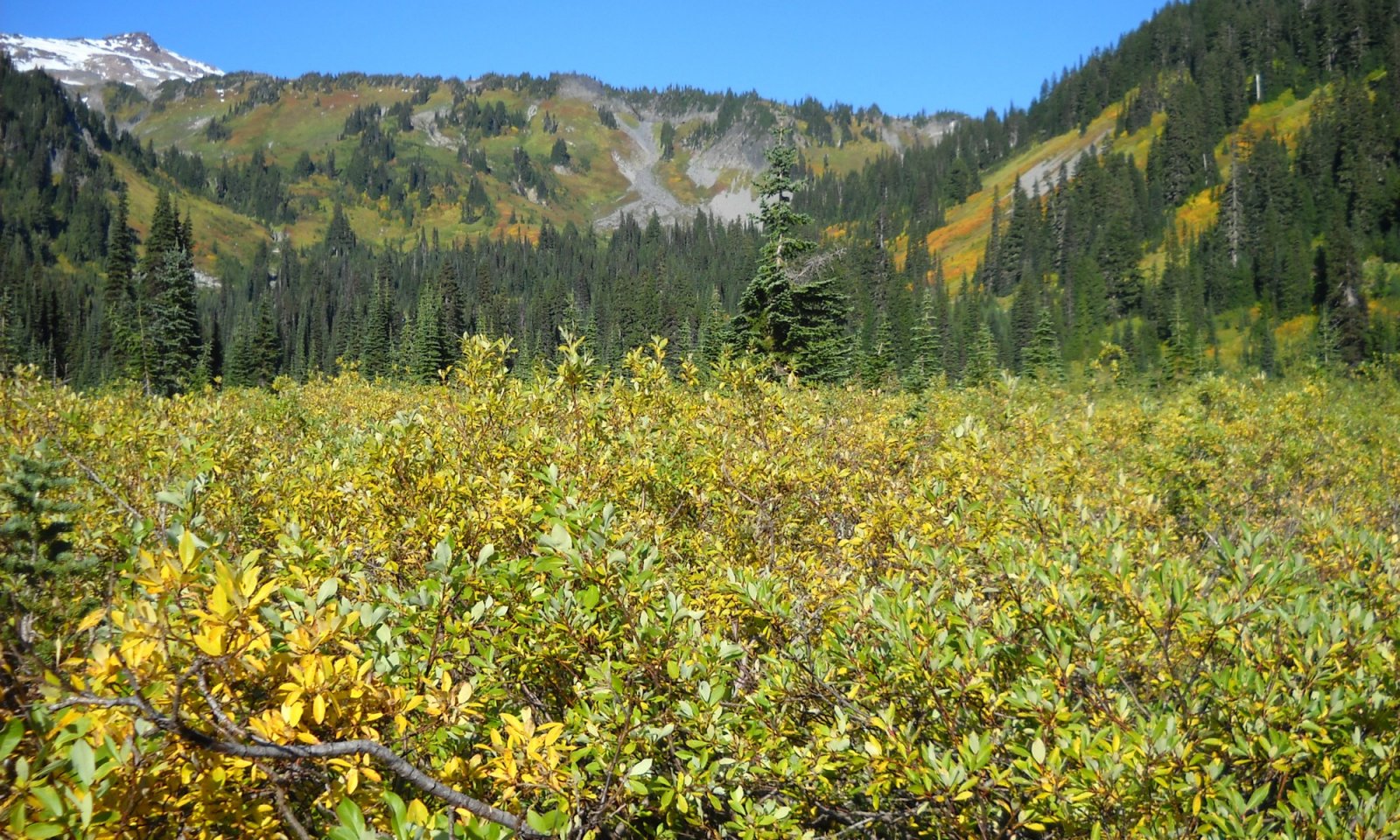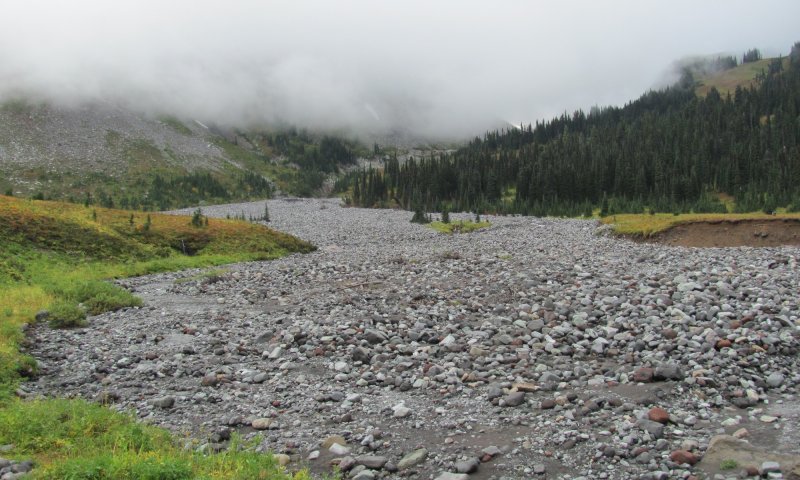

Natural Resources
Conservation Service
Ecological site F003XN949WA
Southern Washington Cascades High Cryic Riparian Forest
Last updated: 1/30/2025
Accessed: 12/21/2025
General information
Provisional. A provisional ecological site description has undergone quality control and quality assurance review. It contains a working state and transition model and enough information to identify the ecological site.
MLRA notes
Major Land Resource Area (MLRA): 003X–Olympic and Cascade Mountains
Steep mountains and narrow to broad, gently sloping valleys characterize this MLRA. A triple junction of two oceanic plates and one continental plate is directly offshore from Puget Sound. Subduction of the oceanic plates under the westerly and northwesterly moving continental plate contributes to volcanic activity in the Cascade Mountains. Movement among these plates has resulted in major earthquakes and the formation of large stratovolcanoes. The Cascade Mountains consist primarily of volcanic crystalline rock and some associated metasedimentary rock. The mean annual precipitation is dominantly 60 to 100 inches, but it is 30 to 60 inches on the east side of the Cascade Mountains.
The soil orders in this MLRA are dominantly Andisols, Spodosols, and Inceptisols and minor areas of Entisols and Histosols. The soils are dominantly in the frigid or cryic temperature regime and the udic moisture regime. The soils generally are shallow to very deep, well drained, ashy to medial, and loamy or sandy. They are on mountain slopes and ridges.
Ecological site concept
This ecological site is in cold, moist areas at low to high elevations (1,700 to 6,900 feet) in Mount Rainier National Park. The site is on flood plains and terraces of river valleys. The most common natural disturbance is flooding. The volume and longevity of the flooding determine the effect on the dynamics of the forest. Elevation and climate are key components in the succession of the forest. The cold, wet winters and cool, dry summers impact the rate of growth and time to maturity.
The soils that support this site are in the cryic soil temperature regime and the udic soil moisture regime. They are somewhat excessively drained and very deep. Soil moisture is not a limiting factor to forest growth because of the abundance of precipitation and the inherent water-holding properties of soils influenced by volcanic ash. A thin organic horizon consisting of decomposing twigs, needles, and litter is on the soil surface. This horizon helps to protect the soils from wind and water erosion.
Alaska cedar (Callitropsis nootkatensis) and Sitka alder (Alnus viridis ssp. sinuata) are the most common overstory species. Some Pacific silver fir (Abies amabilis), Engelmann spruce (Picea engelmannii), black cottonwood (Populus balsamifera ssp. trichocarpa), and Douglas-fir (Pseudotsuga menziesii) are present.
Associated sites
| F003XN950WA |
Southern Washington Cascades Moist High Cryic Coniferous Forest Ecological Site F003XN950WA is located within the cryic temperature regime and is upslope from riparian corridors. This conifer forest is not influenced by flooding disturbance, but may have a seasonal high water table at a depth of 10 to 20 inches during the growing season. Primary vegetation indicators include mountain hemlock and Cascade azalea. |
|---|
Similar sites
| F003XN944WA |
Southern Washington Cascades Low Cryic Riparian Forest Ecological site F003XN949WA is located at high elevations compared to site F003XN944WA, Southern Washington Cascades Low Cryic Riparian Forest. Both sites are associated with the Flett soils and are subject to intense flooding. Site F003XN949WA is in colder, wetter areas at high elevations; thus, the growing conditions are harsher. Ecological site F003XN944WA supports black cottonwood and Pacific silver fir in the reference community, and site F003XN949WA supports Alaska cedar and Sitka alder. The rates of maturity and growth of species are lower on site F003XN949WA than they are on site F003XN944WA. |
|---|
Table 1. Dominant plant species
| Tree |
(1) Callitropsis nootkatensis |
|---|---|
| Shrub |
(1) Salix barclayi |
| Herbaceous |
Not specified |
Click on box and path labels to scroll to the respective text.


